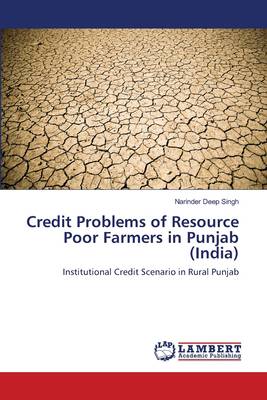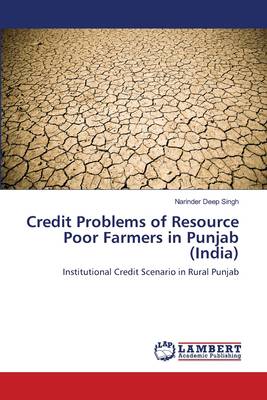
- Afhalen na 1 uur in een winkel met voorraad
- Gratis thuislevering in België vanaf € 30
- Ruim aanbod met 7 miljoen producten
- Afhalen na 1 uur in een winkel met voorraad
- Gratis thuislevering in België vanaf € 30
- Ruim aanbod met 7 miljoen producten
Credit Problems of Resource Poor Farmers in Punjab (India)
Institutional Credit Scenario in Rural Punjab
Narinder Deep Singh
Paperback | Engels
€ 59,95
+ 119 punten
Omschrijving
Indian agriculture is overwhelmingly a small farmers enterprise with proportion of small and marginal land holdings (below 2 ha) constituting nearly 83 per cent of the total holdings in India. But these resource poor farmers are mostly unable to meet their financial liabilities from their limited income and are generally indebted. The lack of institutional credit has remained a major constraint in the economic enlistment of these people, despite the significant strides achieved in terms of spread, network and outreach of rural financial institutions like commercial banks, reginal rural banks, cooperative banks/ societies etc. since independence. The quantum of flow of institutional financial resources specifically to these farmers continues to be inadequate which is one of the major constraint in the adoption of new technological practices, land improvements and building up of irrigation and marketing infrastructure, severely, affecting the income of these farmers and making them dependent on non institutional credit which is exploitative in nature.
Specificaties
Betrokkenen
- Auteur(s):
- Uitgeverij:
Inhoud
- Aantal bladzijden:
- 80
- Taal:
- Engels
Eigenschappen
- Productcode (EAN):
- 9783659216985
- Verschijningsdatum:
- 15/08/2012
- Uitvoering:
- Paperback
- Afmetingen:
- 152 mm x 229 mm
- Gewicht:
- 127 g

Alleen bij Standaard Boekhandel
+ 119 punten op je klantenkaart van Standaard Boekhandel
Beoordelingen
We publiceren alleen reviews die voldoen aan de voorwaarden voor reviews. Bekijk onze voorwaarden voor reviews.










